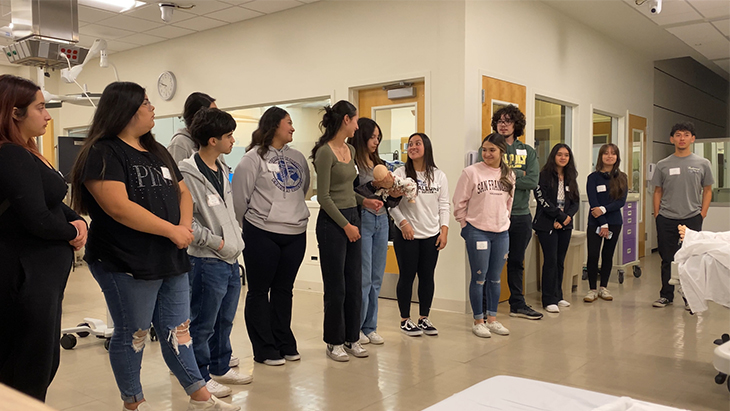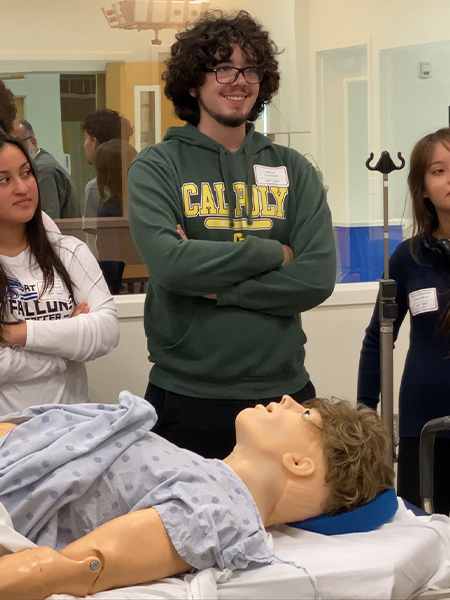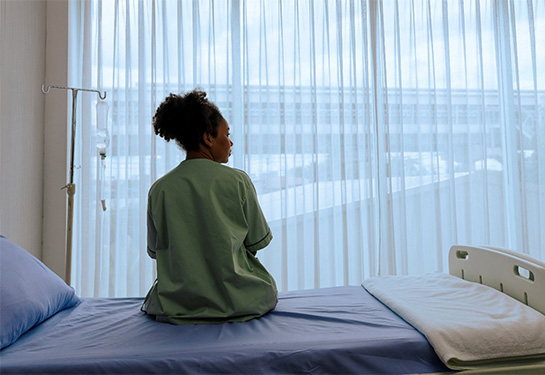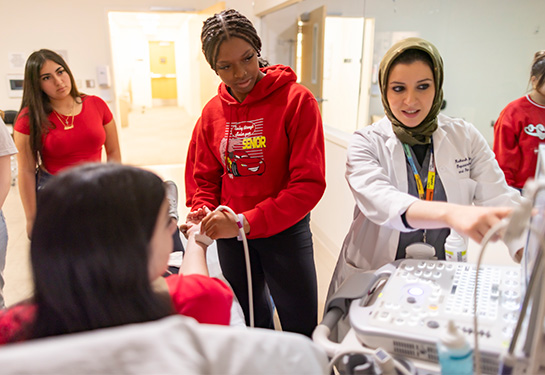School of Medicine hosts Merced County teenagers and encourages them to become physicians
High school students from Atwater and Livingston get a glimpse of medical careers
Pablo Zurita is a high school senior from Merced County who aspires to become a family medicine physician. This week, he got a glimpse of what it would take to reach his goal by visiting the UC Davis School of Medicine for an eye-opening field trip.
“This brings you to the reality of what med school is like,” he said after visiting a simulation lab and before watching a panel discussion featuring medical students.
Zurita was one of nine students from Livington High School who joined another nine from Atwater High School on Tuesday morning for a behind-the-scenes look into the School of Medicine:
They listened attentively as a representative from the admissions office explained how to improve their chances of getting into a school that accepts fewer than 3% of its applicants. They learned about an academic program that guides community college students into medical school. They practiced life-saving techniques on manikins. Medical students even offered encouragement and tips on how they beat the odds and made it to UC Davis.

UC Davis responds to workforce needs
This type of outreach by UC Davis has been taking place for years with local high school students. But most recently, the effort has expanded to high schools in the Central Valley where a shortage of doctors contributes to health inequities.
Atwater and Livingston high schools are located in agriculture-rich Merced County, which has just 74 primary care physicians per 100,000 residents. Sacramento County, in contrast, has 1,012.
A key to boosting workforce needs in Central Valley counties, medical school leaders say, is to recruit students who are from those areas.
“The Central Valley has fewer doctors than in the rest of California,” said Patrica Gonzalez, a manger in the medical school’s Office of Student and Resident Diversity, or OSRD, which sponsored the experience.
The 18 students and two teachers arrived at the Sacramento campus on a yellow school bus after the roughly 100-mile trip. Pediatrician Laura Kester Prakash, faculty director for the OSRDs K-12 outreach programs, greeted the students.
Hands-on experience in the simulation lab
Then the students became familiar with the various manikins laying in hospital beds in the Center for Health and Technology simulation lab.

Francisco Ramirez, who helps run the lab, explained the importance of training with realistic circumstances. These include using the same monitors found throughout the hospital and caring for manikins that mimic medical conditions, including childbirth.
The debriefings after training, he said, are critical: “That’s really where the learning takes place.”
Students appeared engaged as they gathered around Ramirez, who spoke over a series of beeps from a machine. He talked about life-saving techniques in front of a manikin in the simulation operating room.
What do you do if you come across someone on the street who is unresponsive and needs medical attention? asked Ramirez, who is an emergency medical technician. “Scene safety,” they answered. “Check for pulse,” they continued. “Get help.” When he asked for a volunteer to practice with an Automatic External Defibrillator, a girl up front quickly stepped up to place the sticky AED pads on the manikin’s chest.
Another student, Erica Pacheco of Atwater High, paid close attention to a crash course on intubation and the importance of monitoring vital signs. “I’m interested in the medical field, I want to be a labor and delivery nurse,” Pacheco said. She added that she appreciated the field trip: “Just having more insight about what’s going on, and what I’m going to be looking for in the future.”
Students are already passionate about health care
It’s no surprise the students were familiar with what to do in an emergency: They belong to their schools’ health sciences pathway, a series of electives they take for at least three years. The pathway introduces students to health careers and offers courses that lead to certifications that will make them attractive candidates for jobs after high school.
Many of the students, said Livingston High health sciences teacher Marielle Valdez, will be the first in their family to attend college. Several of them have parents who attained only an elementary education in Mexico or India, then immigrated to work in Central Valley agricultural fields, she said.
“This year, I’ve really pushed to bring them out and do a lot of things, and I think it’s definitely opening their eyes,” Valdez said, ranking the field trip as an “awesome” experience. “I’m encouraging them to not set their bar low.”
She predicts that at least 60% of her students will pursue a health care career.
That includes Pablo Zurita, the future family medicine physician. “Livingston’s a pretty small community and sometimes there aren’t that many doctors,” he said. “Most of the people who live there work in agriculture, and my parents, they work in agriculture, and I want to help people like my parents.”



